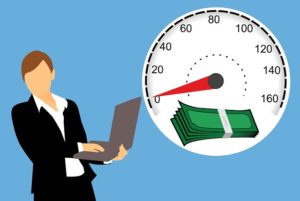Negative stress at work: Most people experience some form of stress at work. In fact, according to a 2020 study by the American Psychological Association, 69% of workers report feeling stressed out on the job. This can be due to several factors, such as tight deadlines, difficult co-workers, or overwhelming responsibilities. While some level of stress is normal and can even help you stay motivated and productive, too much stress can negatively affect your mental and physical health. In this blog post, we will discuss the top 11 negative stress scenarios at work.
Table of Contents
1. Negative stress at work – Tight deadlines
 Negative stress at work can take many forms, but tight deadlines are one of the most common. When you’re up against a ticking clock, it can be hard to stay calm and focused. You may feel like you’re falling behind, and the pressure can be overwhelming. If you find yourself in this situation, it’s essential to take a step back and assess the situation.
Negative stress at work can take many forms, but tight deadlines are one of the most common. When you’re up against a ticking clock, it can be hard to stay calm and focused. You may feel like you’re falling behind, and the pressure can be overwhelming. If you find yourself in this situation, it’s essential to take a step back and assess the situation.
What can you realistically accomplish in the time you have? What tasks are most important? Once you’ve identified your priorities, you can develop a plan of action and start working towards a solution. Don’t be afraid to ask for help if you need it, and remember to take breaks when you feel overwhelmed. With a little bit of planning and effort, you can successfully manage any tight deadline.
2. Negative stress at work -Difficult co-workers
Working near one or more difficult co-workers can be a stressful experience. Whether it’s someone constantly interrupting your workflow with frivolous questions or an individual who seems to relish making critical comments about your work, dealing with disruptive personalities day in and day out can be very draining.
However, it’s important to remember that these problematic co-workers are not necessarily trying to be malicious. In all likelihood, they are simply going through their challenges, which may be coloring their interactions with you and others. That means that the best way to deal with stress at work caused by disruptive co-workers is to cultivate some empathy for them while maintaining clear boundaries and taking steps to protect your well-being.
For instance, you might take some time each day to quiet your mind to leave any negativity behind before heading into the office. And if the situation becomes too much to handle, you may want to consider speaking directly with the co-worker or your manager about the difficulties you’re experiencing. By keeping these tips in mind, you can better cope with the negative stress of working alongside difficult colleagues.
3. Negative stress at work – Overwhelming responsibilities
 Negative stress at work can come from various sources, but one of the most common is feeling overwhelmed by responsibilities. Whether it’s being assigned too many tasks or simply having a lot on your plate, this can lead to a feeling of being constantly behind and stressed out. If you’re starting to feel this way, it’s essential to take steps to manage your stress before it gets out of control. One way to do this is to break down your tasks into smaller, more manageable pieces. Make a list of everything that needs to be done, and prioritize your items.
Negative stress at work can come from various sources, but one of the most common is feeling overwhelmed by responsibilities. Whether it’s being assigned too many tasks or simply having a lot on your plate, this can lead to a feeling of being constantly behind and stressed out. If you’re starting to feel this way, it’s essential to take steps to manage your stress before it gets out of control. One way to do this is to break down your tasks into smaller, more manageable pieces. Make a list of everything that needs to be done, and prioritize your items.
You may also want to delegate some tasks to others on your team. Another helpful tip is to take breaks throughout the day and make time for yourself outside of work. This can help you recharge and return refreshed and ready to tackle whatever comes your way.
By following these tips, you can better cope with the negative stress of an overwhelming workload.
4. Negative stress at work – Unclear job expectations
When it comes to workplace stress, most people think of factors like high pressure and tight deadlines. However, another common cause of negative stress is a lack of clear job expectations. This can be particularly challenging when an employee is placed into a position that they have little experience in or given different tasks regularly without any training or guidance.
In these situations, managers and supervisors need to be proactive in communicating with their employees about the expectations and requirements for their roles and giving them timely feedback whenever possible. By taking this approach, workplaces can help their employees avoid feelings of helplessness or confusion that trigger negative stress.
In addition, organizations can benefit from increased productivity, reduced turnover rates, and higher overall morale among their teams. Overall, by recognizing and addressing the issue of unclear job expectations at work, organizations can help to create healthier and more positive work environments for everyone.
5. Negative stress at work – Lack of control over work schedule or tasks
 It’s no secret that stress can hurt our mental and physical health. When we feel like we’re constantly under pressure, it can lead to feelings of anxiety, depression, and even physical illness. And when that stress is coming from our job, it can be even harder to cope. One of the most common sources of job-related stress is a lack of control over our work schedule or tasks. If we feel like we’re constantly being asked to do more than we can handle, or we’re never given a chance to catch our breath, it can lead to some serious consequences.
It’s no secret that stress can hurt our mental and physical health. When we feel like we’re constantly under pressure, it can lead to feelings of anxiety, depression, and even physical illness. And when that stress is coming from our job, it can be even harder to cope. One of the most common sources of job-related stress is a lack of control over our work schedule or tasks. If we feel like we’re constantly being asked to do more than we can handle, or we’re never given a chance to catch our breath, it can lead to some serious consequences.
Studies have shown that employees who feel like they lack control over their work are more likely to suffer from insomnia, high blood pressure, and heart disease. They’re also more likely to make mistakes on the job, impacting their performance and the company’s bottom line. So if you’re feeling stressed out at work, it’s essential to regain control of your environment.
Talk to your boss about your concerns and see if there’s any way to negotiate a more flexible schedule. If not, try to take a few minutes each day to decompress and clear your mind. And don’t forget to take care of yourself outside of work. Make time for activities that make you happy and help you relax, like spending time with friends and family, exercising, or reading.
By taking these steps, you can help to reduce the negative impact of stress at work and improve your overall well-being.
6. Negative stress at work – Poor working conditions
Working conditions are a significant source of stress for many employees. Poor lighting, ventilation, and ergonomics can lead to physical discomfort and fatigue, while noise, temperature extremes, and overcrowding can create an unpleasant and disruptive work environment. In addition, workers who feel that their safety is at risk or who have been subjected to harassment or other forms of mistreatment are also likely to experience high stress levels.
While some level of stress is inevitable in any job, employers can take steps to minimize the potential for workplace stressors. By ensuring that working conditions are safe and comfortable, providing adequate support and training, and fostering a positive workplace culture, employers can help to reduce the harmful effects of workplace stress on their employees.
While it’s impossible to eliminate stress from our lives, there are things we can do to manage it healthily. If you’re feeling overwhelmed by stress at work, take some time to assess the situation and see if there are any steps you can take to improve it. Talk to your boss, take a break when you need it, and take care of yourself both at work and home. With a bit of effort, you can help to reduce the negative impact of stress and improve your overall well-being.
7. Negative stress at work – Low pay or lack of benefits
 At work, many sources of stress can negatively impact our well-being. Low pay or a lack of benefits are two common areas where work-related stress arises. In low-paying jobs, employees may struggle to make ends meet, which can lead to feelings of anxiety and frustration. Additionally, workers who lack access to essential benefits like health insurance or paid time off may be more likely to experience burnout due to working extra hours or an inability to take needed time off when they are ill.
At work, many sources of stress can negatively impact our well-being. Low pay or a lack of benefits are two common areas where work-related stress arises. In low-paying jobs, employees may struggle to make ends meet, which can lead to feelings of anxiety and frustration. Additionally, workers who lack access to essential benefits like health insurance or paid time off may be more likely to experience burnout due to working extra hours or an inability to take needed time off when they are ill.
Fortunately, there are steps that we can take to overcome these issues and mitigate their negative impact on our well-being at work. For example, we might look for ways to increase our income by taking on a side hustle or working overtime. We might also try focusing on the positive aspects of our jobs and gratitude because we do have a job at all in today’s competitive economy. By understanding and addressing the root causes of workplace stress, we can stay happy and healthy despite its challenges.
8. Negative stress at work – Bullying or harassment at work
Bullying and harassment in the workplace can create a hostile and stressful environment for employees. This can lead to decreased productivity, absenteeism, and a high turnover rate. It can even lead to physical or mental health problems in extreme cases. If you are being bullied or harassed at work, it is crucial to speak up and get help.
Talk to your supervisor or HR department about the situation. They can help to investigate the issue and take appropriate action. In addition, many employee assistance programs offer confidential counseling and support. Seek out these resources if you are feeling overwhelmed by stress at work. With the right help, you can address the problem and create a more positive working environment.
9. Negative stress at work – Job insecurity or fear of termination
One of the most stressful things at work is feeling like your job is in jeopardy. Whether you’re facing the possibility of a layoff or termination, the uncertainty can take a toll on your mental and physical health. It’s important to remember that you’re not alone in this situation, and there are ways to cope with the stress. First, try to stay positive and focus on what you can control. It’s also important to stay engaged with your work and keep a good attitude.
Additionally, make sure to communicate with your supervisor and ask for feedback. Finally, don’t hesitate to seek professional help if you’re struggling to cope. You can reduce the negative impact of job insecurity and anxiety by taking these steps.
10. Negative stress at work – Work-life balance
It is no secret that many people today experience a great deal of stress in their jobs. Whether they are dealing with rushed deadlines, overwhelming workloads, or difficult colleagues, work pressures can significantly affect overall wellness. This is especially true when it comes to maintaining a healthy work-life balance. While work might seem like everything some days, it is important to remember that other areas of our lives need time and attention.
At the root of this issue is an all-too-common tendency for people to place too much importance on their careers at the expense of other essential areas of life. To combat this problem and maintain positive well-being, it is necessary to develop skills such as self-reflection, open communication with supervisors and co-workers, and effective time management practices.
By identifying the sources of stress in our lives and taking proactive steps to cope with them in healthy ways, we can better nurture our professional and personal lives. After all, a balanced work-life structure allows us to flourish both at home and on the job. And who doesn’t want that?
Conclusion
There you have it, the top ten negative stress at work scenarios. If any of these sound familiar to you, don’t hesitate to reach out for help. Whether it’s seeking professional counseling, talking to your supervisor, or utilizing employee assistance programs, many resources are available to help you cope with stress at work. You can overcome these challenges and create a more positive working environment for yourself and those around you with the proper support.



